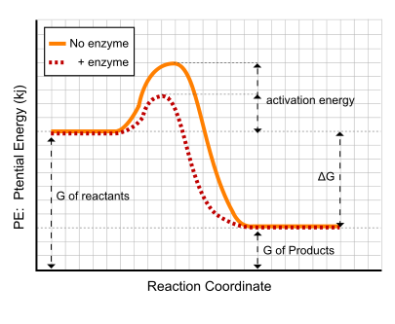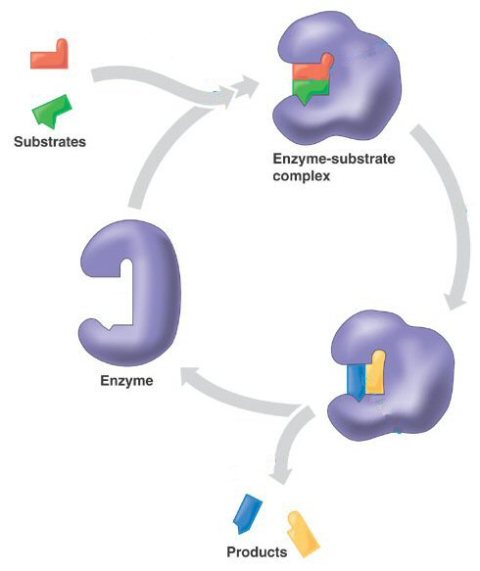Hello there! It’s Avagadbro! Coming to you live from a laptop!
Finally, I’m getting to this quick overview on enzyme action. Enzymes are globular proteins (soluble in water) that act as biological catalysts, and our lecturer covered a lot of this topic last week. However, here is the main thing you need to know about enzymes: THEY ARE MAGICAL.
Haha. Well, almost…
There is an enzyme able to make a reaction go up to ten million times faster than they would under normal circumstances (i.e. without a catalyst) and the enzymes themselves are not altered in the process. That sounds pretty magical if you ask me.
Now, how do they perform such amazing feats? Well, they lower the activation energy of reactions, which allows the reaction to proceed at a much lower energy than it would without a catalyst. Enzymes have regions called active sites that the substrate attaches to. This is where the magic happens…
The substrate attaches to the active site forming a complex with the enzyme. Here, the substrate can be broken down or combined with something else, or both to give the end product of the reaction. The active site’s shape is very specific, which basically means each enzyme can only perform one trick – a particular enzyme can convert only a specific substrate to end product.

(Image retrieved from: Link)

(Image retrieved from: link)
It is important to note that enzymes perform best at their optimum temperature. This optimum temperature varies from enzyme to enzyme. The same goes for pH – certain enzyme will function best at a certain pH. You could say that enzymes perform their acts best when the environment is right – adoring fans, good lighting…. you get the idea.
The action of enzymes are extremely important. Life would not be able to be sustained without them. For instance, carbonic anhydrase, (an enzyme that removes carbon dioxide from the blood by binding it to water), has a turnover rate of 106. This means that one molecule of the enzyme can cause a million molecules of carbon dioxide to react in one second. Without this enzyme, carbon dioxide would accumulate in the blood, ultimately leading to death. Think enzymes are amazing yet? You should, because this is just one example. There are many other enzymes that keep you going.
Enzymes make life possible.
I guess you can think of enzymes as the “Criss Angel of Biochemistry” – their magic tricks are just real and far, far, far more important.
More on Enzymes soon!
References:
Indo Gulf Group – ENZYMES
Fact Monster – ENZYME ACTION














